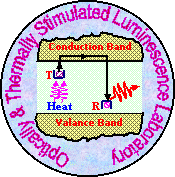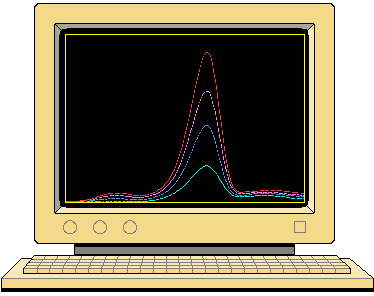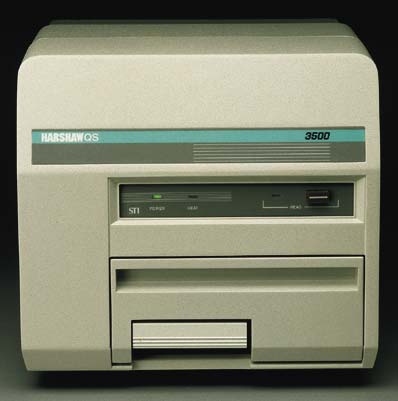 |
Introduction
The Model 3500 TLD Reader provides cost-effective measurements of
the radiation dose absorbed by individual TLD elements: ribbon (chips),
rods, micro-cubes or powders. The instrument includes a sample drawer for
a single element TLD dosimeter, a linear, programmable heating system and
a cooled photomultiplier tube with associated electronics to measure the
TL light output. The WinREMS Software, which runs under Windows on a separate
computer, provides the user interface, the reader control and the applications
software. The manually operated Model 3500 finds applications in medical
physics and dosimetry laboratories. |
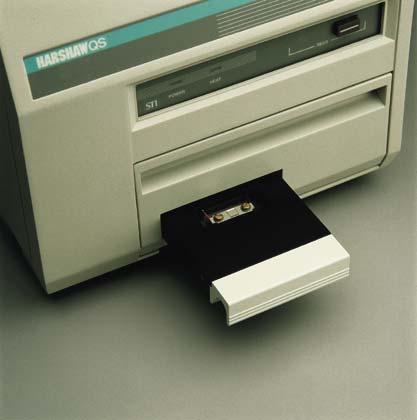
|
Model 3500 Key Features
 Planchet heating
incorporates welded thermocouple for best temperature reproducibility Planchet heating
incorporates welded thermocouple for best temperature reproducibility
 Heating profile
includes pre-heat and post-read anneal cycles, with editing Heating profile
includes pre-heat and post-read anneal cycles, with editing
 Heating temperature
capability up to 600°C Heating temperature
capability up to 600°C
 7 decade glowcurve
acquisition range 7 decade glowcurve
acquisition range
 Thermoelectric
PMT cooler for maximum gain stability Thermoelectric
PMT cooler for maximum gain stability
 Measurement
quality assurance Measurement
quality assurance
 Automatic
background subtraction capability Automatic
background subtraction capability
 Easy to operate,
service and maintain Easy to operate,
service and maintain
 Compact and
attractive; 320 mm wide x 290 mm deep x 290 mm high Compact and
attractive; 320 mm wide x 290 mm deep x 290 mm high
 Optional calibration
software Optional calibration
software
 Optional neutral
density filter to extend the high measurement range Optional neutral
density filter to extend the high measurement range |
Advantages of a Separate Computer
 Minimum initial
investment Minimum initial
investment
 Extremely
flexible parametric adjustments, implemented in software Extremely
flexible parametric adjustments, implemented in software
 The computer
can be used for other purposes when not required for TLD The computer
can be used for other purposes when not required for TLD
 Use of commercial
software for data manipulation, report generation and storage
Applications Use of commercial
software for data manipulation, report generation and storage
Applications
 Radiotherapy planning
verification Radiotherapy planning
verification
 Total Body
Irradiation dose verification Total Body
Irradiation dose verification
 Skin irradiation
dose verification Skin irradiation
dose verification
 Stereotactic
beam output factor Stereotactic
beam output factor
measurement
 Critical organ
dose verification Critical organ
dose verification
 Diagnostic
dose studies Diagnostic
dose studies
 CT dose measurement
for quality CT dose measurement
for quality
assurance
 Environmental
dosimetry Environmental
dosimetry
 Testing for
irradiated food Testing for
irradiated food
 Radioactive
dating Radioactive
dating |
Dosimetry Performance using LiF; Mg, Ti hips
(TLD-100)
 Radiations
measured: Radiations
measured:
Photon, energies > 5 keV
Neutron, thermal to 100 MeV
Electron/beta, energies > 70 keV
 Range: Range:
10 µGy to 1 Gy (1mrad to
100 rad) linear
1 Gy to 20 Gy (100 rad to 2000
rad) supralinear
 Tissue
equivalence: Tissue
equivalence:
< 20% in 3 months without thermal treatment
< 5% in 3 months using preheat or glow curve
deconvolution
 Batch uniformity: Batch uniformity:
+/- 15% Std. Dev. from the batch mean, tighter on
special request
 Residual
TL signal: Residual
TL signal:
< 0.2% of reading, over the range, without anealing
 Repeatability:
for 1 mGy (100 mrad) 137Cs doses, < 2% Std. Dev. of 10 sequential measurements Repeatability:
for 1 mGy (100 mrad) 137Cs doses, < 2% Std. Dev. of 10 sequential measurements
 Reuse:
more than 500 per dosimeter with < 10% sensitivity charge Reuse:
more than 500 per dosimeter with < 10% sensitivity charge
 Threshold:
<10 µGy (1 mrad) based on 2.26 Std. Dev. of 10 repeat readings
of an unexposed dosimeter Threshold:
<10 µGy (1 mrad) based on 2.26 Std. Dev. of 10 repeat readings
of an unexposed dosimeter |
Available Dosimeters
For a listing of available dosimeters,
click here.
Recessed planchets for chip sizes
3.2mm x 3.2mm, 6.4mm x 6.4mm,
15.7mm round
Chip and Rod planchet
3.2mm x 3.2mm chip and 6mm rod,
1mm dia. or 1mm sq.
Accessories
 Personal Computer Personal Computer
 Printer Printer
 N2
gas flowmeter N2
gas flowmeter
 2210
Tabletop Irradiator 2210
Tabletop Irradiator
 Low temp annealing
oven Low temp annealing
oven
 High temp
annealing oven High temp
annealing oven
 Programmable
annealing oven Programmable
annealing oven
 Uninterruptable
power supply Uninterruptable
power supply
 Vacuum tweezers Vacuum tweezers
 Dosimeter
storage tray Dosimeter
storage tray
 Stainless
steel annealing tray assembly Stainless
steel annealing tray assembly
 Stainless
steel annealing tray Stainless
steel annealing tray
|
STANDARD FUNCTIONS PERFORMED BY WinREMS
SOFTWARE
 Graphical
user interface Graphical
user interface
Pull-down menus
Selection via mouse
TL data acquisition parameter selections
 Application
of Reader Calibration Factor, (RCF), and Element Correction Coefficient,
(ECC) Application
of Reader Calibration Factor, (RCF), and Element Correction Coefficient,
(ECC)
 Automatic
background subtraction Automatic
background subtraction
 Application
of quality factor Application
of quality factor
 Raw data and
glowcurve printing during acquisition Raw data and
glowcurve printing during acquisition
 ASCII export
file generation ASCII export
file generation
 Periodic PMT
testing of noise and response to test light Periodic PMT
testing of noise and response to test light
 Alarm and
stop if TL data exceeds preset limit Alarm and
stop if TL data exceeds preset limit
 Re-read TLD
if TL data exceeds preset limit Re-read TLD
if TL data exceeds preset limit
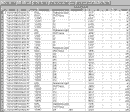
|
TLD heating profile setup
 Selection of pre-defined
Time/Temperature Profiles (TTPs) Selection of pre-defined
Time/Temperature Profiles (TTPs)
 Editing of:
TTP titles, Region of Interest Editing of:
TTP titles, Region of Interest
(ROI) limits, Calibration region, Preheat
temperature and time, Maximum read
temperature, Temperature ramp rate, Anneal temperature and time, Acquisition
time |
TL data acquisition
 Acquisition of
glowcurve Acquisition of
glowcurve
 Acquisition
of temperature profile Acquisition
of temperature profile

|
TL data presentation and storage
 Reading parameters Reading parameters
 Date and time
of reading Date and time
of reading
 Dosimeter
identification Dosimeter
identification
 Graphically
presented glowcurve and TTP Graphically
presented glowcurve and TTP
 Integrals
of up to four regions of interest Integrals
of up to four regions of interest
 Applicable
RCF and ECC Applicable
RCF and ECC
 Background
value for subtraction Background
value for subtraction
 Values of
test light and PMT dark current Values of
test light and PMT dark current
readings
Software options
 Dosimeter calibration
software Dosimeter calibration
software
 Glowcurve
deconvolution Glowcurve
deconvolution |
Computer requirements (minimum)
Pentium 166 MHz with 32 MB RAM; 40 MB free disk space;
CDROM drive
CGA color monitor (800 x 600), keyboard and mouse.
Windows 95, 98 or NT 4.x
One RS232 serial port for connection to Model 3500, one parallel port
for printer.
|
|
|
